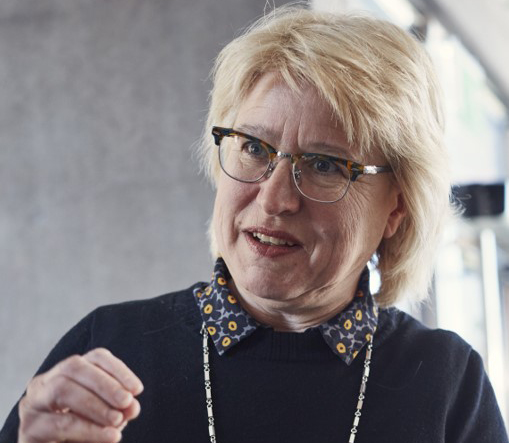Anne-Marie Tillman about her 25 years with Swedish Life Cycle Center and Life Cycle Assessment

Anne-Marie Tillman, since year 2000 professor at the Department of Environmental Systems Analysis at Chalmers, is one of the founders of Centre for Environmental Assessment of Product and Material Systems (CPM); the predecessor to Swedish Life Cycle Center. Until recently, Anne-Marie was the chair of the Scientific Advisory Group of the centre. She was also a key actor in establishing the Division of Environmental Systems Analysis at Chalmers and served as its head for almost ten years. During her long career she has authored approximately 60 scientific publications in the field of Environmental Systems Analysis. Her research includes the development of methodology for, and application of, Life Cycle Assessment (LCA) and related environmental system analysis tools. She is one of the two authors of the internationally appreciated textbook in Life Cycle Assessment, The Hitch Hiker’s Guide to Life Cycle Assessment. Anne-Marie is a member of the Royal Academy for Engineering Sciences (IVA) and she serves on the board of Mistra, The Swedish Foundation for Strategic Environmental Research.
Hi Anne-Marie! Can you tell us how it all started 25 years ago?
– We started CPM at a time when the focus for environmental attention shifted from production sites to products, and Life Cycle Assessment was emerging. Among other things, the Federation of Swedish Industries (dissolved in 2001) initiated a project called the Product Ecology project, which involved both companies and researchers. Experience from that project and others, and the network of companies and researchers built up within its framework, was an important basis when we applied for funding for a Center of Excellence in Life Cycle Assessment as a response to a call made by Nutek, the predecessor of Vinnova.
What is the most important thing you learned from the years with Swedish Life Cycle Center?
– I think that one of the biggest insights is how much there is to gain from collaboration. When researchers and practitioners, whether from industry or the policy sphere, work together the result is mutual learning and co-creation of knowledge .
What challenges within Life Cycle Assessment do you think are most important to solve?
– What is most important for companies working with Life Cycle Thinking, as well as for policy makers influencing them, is to walk the talk and actually reduce the environmental impact of products. Put simply, let us re-interpret the acronym LCA to Life Cycle Action! In terms of research, questions regarding the application of Life Cycle Assessment and Life Cycle Management remain important, but also some methodological issues. For example, the methods for assessing the effects of land use are still shaky. I also think that the weighting methods in Life Cycle Assessment, where CPM/the Swedish Life Cycle Center was a pioneer, are worth more attention and in need of continued updating. More generally, I believe that there is great potential to develop modern methods for updating and sharing Life Cycle Assessment data.
What do you think that Swedish Life Cycle Center means for Sweden?
– In Sweden we succeeded early in building strong connections between academia and industry within the life cycle field, which is quite rare when compared to other countries. Swedish Life Cycle Center expands on this through bringing together almost all relevant Swedish actors in the field, and is also important in bringing continuity to the network.
What parts of your work have you appreciated the most during your career?
– It has been a privilege to be part of building a completely new field of knowledge, and to be able to do so in in an area which is truly important, to society at large but also to me personally. The writing of a textbook was one part of that. Another was to arrange the international Life Cycle Management conference which was organized and hosted by Swedish Life Cycle Center in 2013. I have also enjoyed being involved in building organizations able to carry that knowledge, both CPM/Swedish Life Cycle Center and the Division of Environmental Systems Analysis. Even so, the part of my job I have enjoyed the most is perhaps the work with the doctoral students.
What do you want for Swedish Life Cycle Center in the future?
– The network within the centre is unique and should be well taken care of, for example through continued networking between academia and practioners and through research collaborations. The fact that Swedish Life Cycle Center, unlike CPM, is a national competence centre should be taken advantage of. As I see it, its mission includes to provide an infrastructure for the knowledge in the field as well as for those who carry it. Continuing initiatives such as the doctoral course in Life Cycle Assessment is important, as is arranging meetings, both scientific and more practice-oriented. I also believe that the Swedish Life Cycle Center could do even more to make the life cycle research carried out in Sweden visible. I would like the centre to become a forum for gathering all relevant academic knowledge in the Life Cycle Assessment field and make it visible and easily accessible for other academics as well as practitioners.
Swedish Life Cycle Center would like to end by thanking Anne-Marie for her long and great commitment in the life cycle field, but also for her invaluable contribution to the centre during the years!
